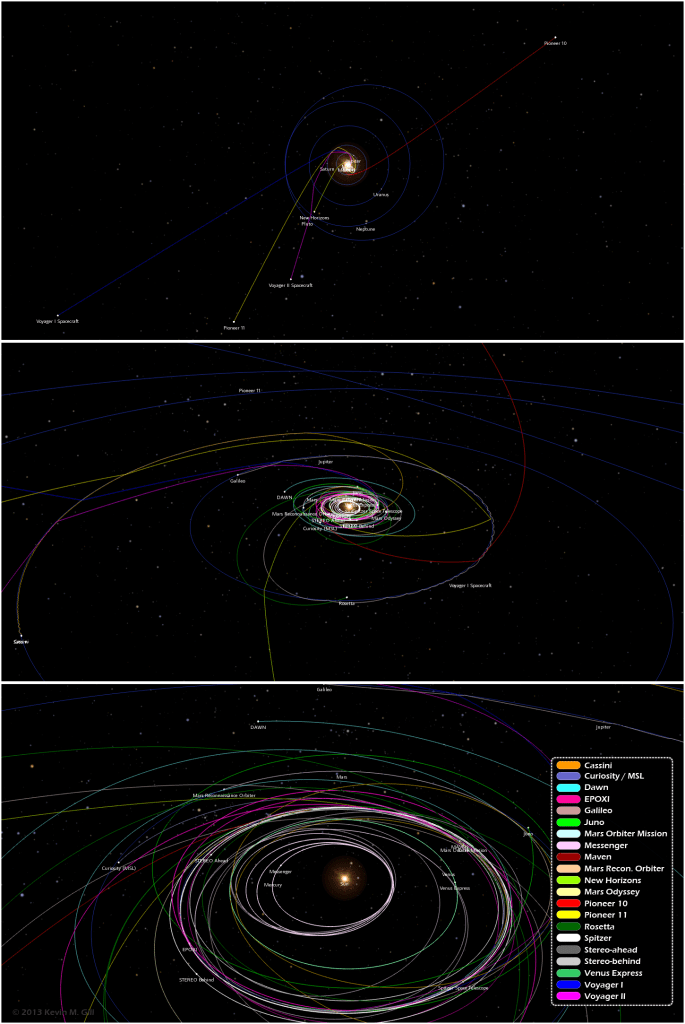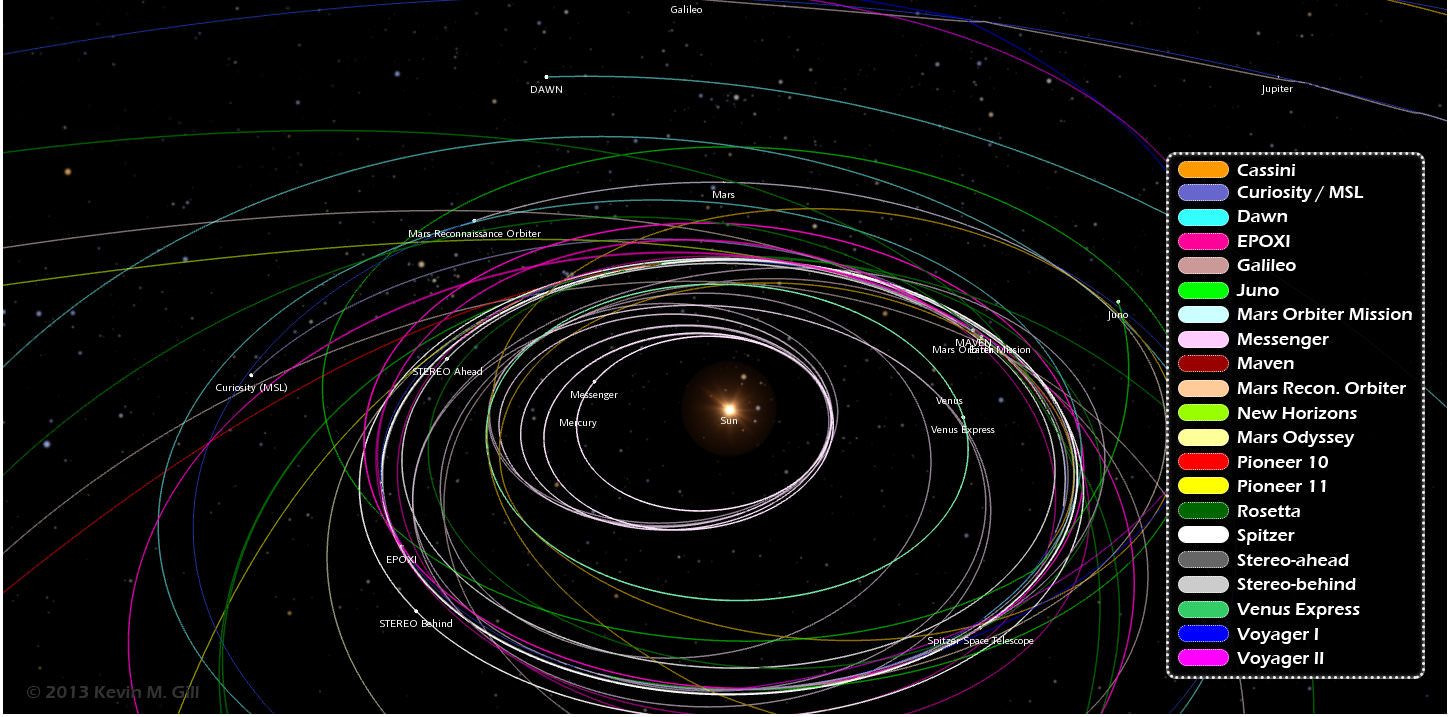Want to know the orbital paths where different spacecraft have traveled and where they are now? A great new infographic put together by Kevin Gill is a visualization of where 21 different unmanned spacecraft have traveled through the Solar System. “The spacecraft data and planet orbital data is derived from NASA/JPL Horizons ephemeris,” said Gill on G+. “The image was rendered using a modified version of my Orbit Viewer WebGL application and put into infographic form using Photoshop. Body and spacecraft positions are as of December 15, 2013.”
By the way, Kevin’s orbit viewer is really fun to play with!
See the full infographic below or on Kevin’s website here:
Paths range from the earliest vector data available, typically just following launch, to either the latest data available or December 15, 2013, whichever is earlier.
“Originally intended as an animation, my browser was not too amused with the quantity of data being thrown at it,” Kevin said via G+. “In the new year, given sufficient demand, I may optimize the modeling and animation algorithms and either produce the animation or release it as a distinct WebGL visualization.”
We certainly look forward to that!



You mean, the tiny little space surrounding our home star? Those “places we’ve been”? 😉
I think one has to consider where we’ve been to via telescope as well. The whole point of going somewhere is to obtain information. If someone in a coma is transferred from New York to London, has he really been to London if he has not the slightest awareness of it. Same as if we sent a piece of metal to Mars with no sensors. Conversely, if you have perfect sensory awareness of some distant locale, is it even slightly relevant that you’re not physically present.
So where we’ve been is determined by how much information was obtained. So compare the amount of information derived via telescope about some exoplanet, to the amount of information obtainable by actually putting a vessel into an orbit around it, and that ratio times the distance to that exoplanet determines how far we’ve actually traveled to it. Splitting hairs maybe though.
Gotta start somewhere. Galactic Empires aren’t built in a day…